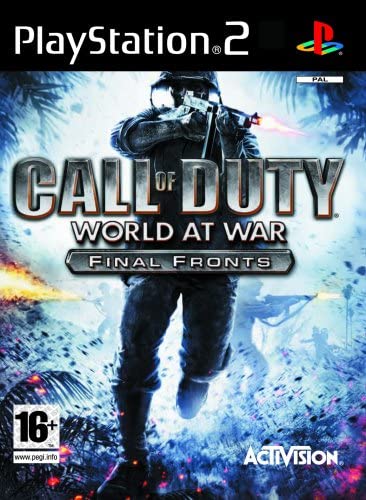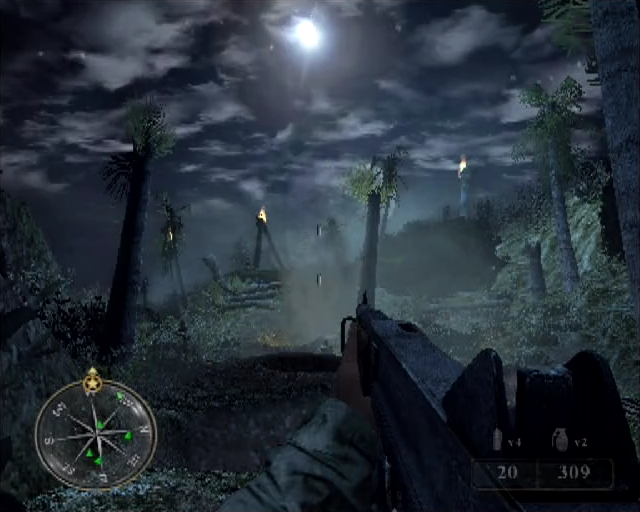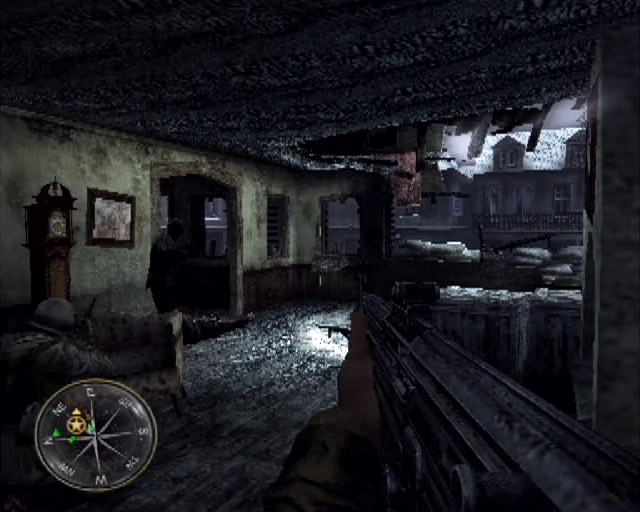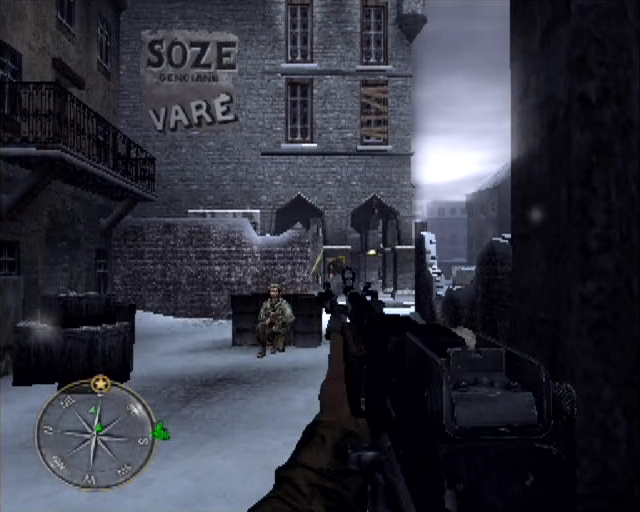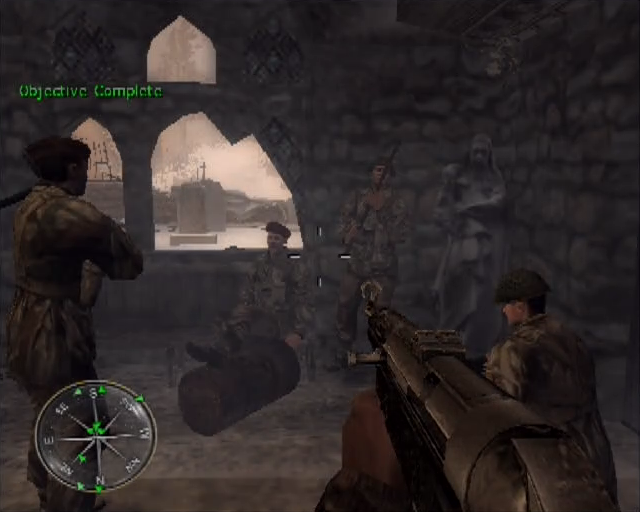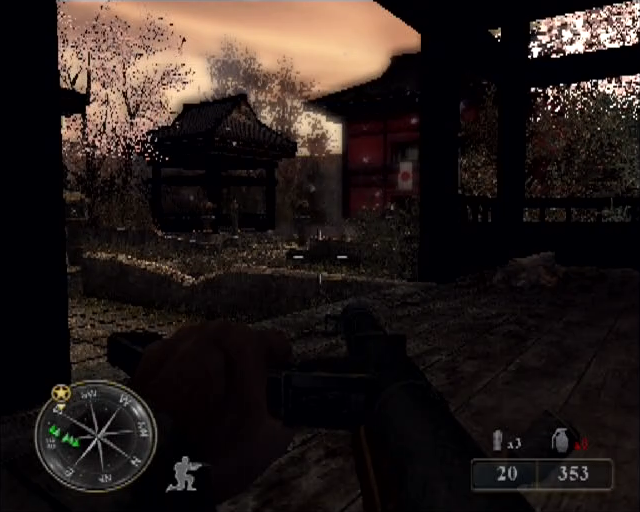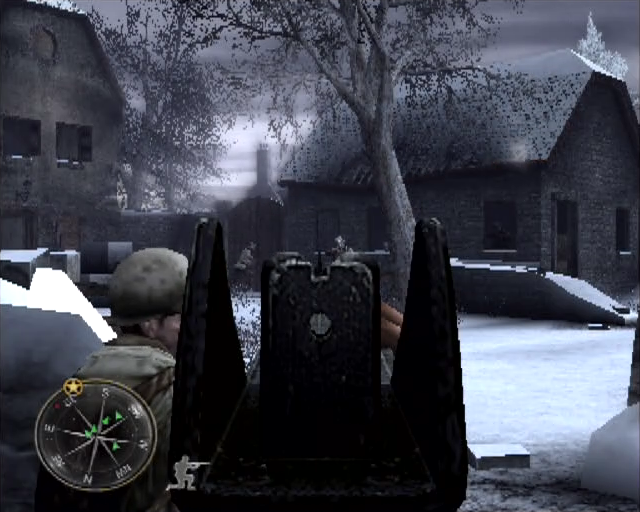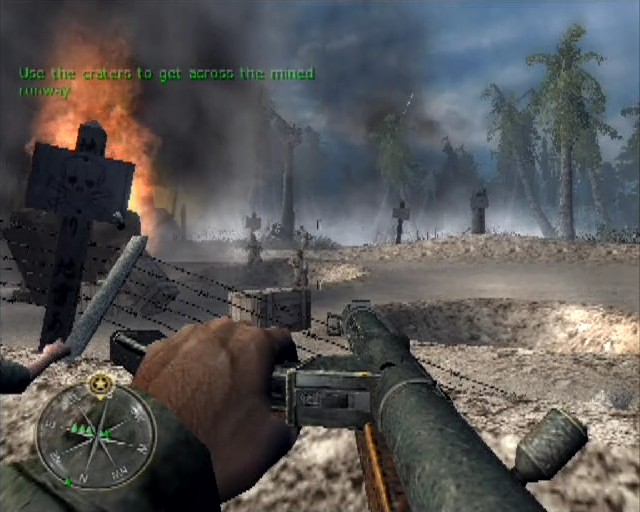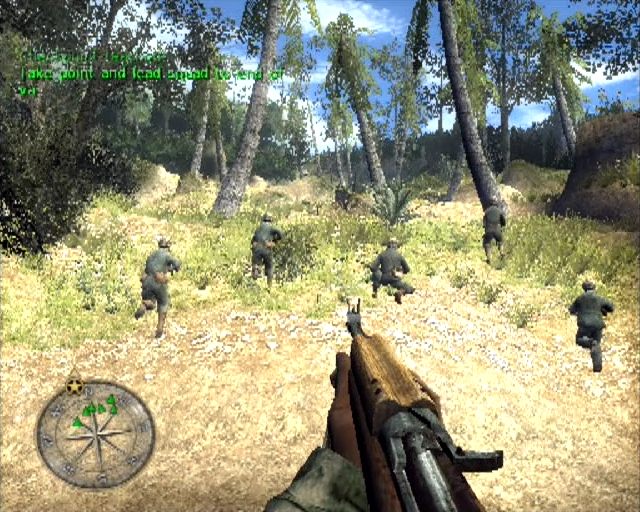CALL OF DUTY: WORLD AT WAR: FINAL FRONTS (PS2)
I may have let slip once or twice, but I love a curio, an unexpected gaming discovery. Now, I know what you’re thinking: Call of Duty is very, very well-known. How can this possibly qualify as unexpected? When Modern Warfare landed in 2007, it marked not only a gigantic spike in popularity for the series but also an apparent clean break for its next-gen era, appearing only on PC and seventh-generation systems Xbox 360 and PlayStation 3. Treyarch’s WWII-themed follow-up would arrive a year later and here’s where things get interesting: Final Fronts isn’t simply a port, as I first suspected. It’s a PlayStation 2-exclusive spin-off released some eight years into the console’s remarkable lifecycle.
If you’re expecting a Modern Warfare-like experience on PS2, then you’re inevitably going to be disappointed. Developed by hit-and-miss FPS stalwarts Rebellion, FF is more comparable to Call of Duty's 2 & 3, and this surprise outing on PS2 can perhaps be attributed to the familiar WWII setting of these previous instalments. There are a number of positives: a 12-level story, split across four missions, features campaigns set in both the Pacific and Europe. The settings exhibit more colour and gumption than COD3. Beach assaults, trench runs and bunker bombings fare prominently in the surprisingly bright and energetic “War in the Pacific” campaign.
Final Fronts lacks visual polish, but its levels offer a fair array of settings and an admirable level of detail
To its credit, Final Fronts largely resists straying into dull, brownish-grey locations, with the snow-laden “Winter Offensive” featuring towns wrought with an elegant array of damaged buildings and detailed interiors. A short, on-rails tank level shows common sense from the developer. Whilst some might find being limited to the gunner’s seat a bit restrictive, it’s likely a smart move on PlayStation 2 hardware, where the scripted nature of the level feels tight and well-orchestrated. The concluding level, set around a Japanese temple and with cherry blossoms swirling in the wind, shows a surprising degree of visual flair and cinematic license.
Rebellion did about as much as reasonably could have been expected of distilling an action-packed Call of Duty experience into a latter-day PlayStation 2 game. The busyness of the levels is a real plus: you’ll see planes on bombing runs, tanks rumbling off in this distance, troop formations advancing and firefights ensuing in the background, with the addition of hostile weather conditions and more explosions than you can shake a grenade at. There’s no question, the surface detail is pretty immersive.
Rebellion did about as much as reasonably could have been expected of distilling an action-packed Call of Duty experience into a latter-day PlayStation 2 game. The busyness of the levels is a real plus: you’ll see planes on bombing runs, tanks rumbling off in this distance, troop formations advancing and firefights ensuing in the background, with the addition of hostile weather conditions and more explosions than you can shake a grenade at. There’s no question, the surface detail is pretty immersive.
The reality is, however, the project likely lacked both the hardware and the funds to make a dream PS2 swansong a reality. Whilst Treyarch had the luxury of the silky-smooth IW 3.0 engine for the main World at War, Rebellion had to make do with Asura, which had been used to power more humble endeavours in the years preceding Final Fronts, including World War Zero: Iron Storm and portable outings for Dead to Rights and Aliens vs Predator. Some useful features do carry over though. The snap-to aiming and a modern health system eliminate some of the more frustrating aspects of older instalments, whilst also ensuring there’s more pace and energy to the action. Shooting is fun but lacks polish; aiming is a little imprecise, meaning the occasional sniper section feels cumbersome. Certain guns take too long to fire and the hitboxes remain suspect, especially when shooting foes who are on the move.
That it can’t compete with the Modern Warfare era titles is forgivable. A bigger problem is, Final Fronts doesn’t fare especially well against its PS2 competition, either. It isn’t as smooth, as easy on the eye or as technically robust as the likes of Killzone and TimeSplitters: Future Perfect. It matches up moderately well next to its predecessors, but performance issues are fairly prevalent and there are several glaring bugs. Whilst there’s loads of activity to the levels, the characters are less impressive, with recycled character skins and jerky, laboured animations. It also suffers a case of rag-dolling that’s so severe, it would make The Exorcist blush. Teammates positively shove the player out of cover, before running directly down the line of fire, doing everything they can to get in the way. On more than one occasion, I had to restart a checkpoint, because I’d dropped from a ledge and got stuck in an NPC.
That it can’t compete with the Modern Warfare era titles is forgivable. A bigger problem is, Final Fronts doesn’t fare especially well against its PS2 competition, either. It isn’t as smooth, as easy on the eye or as technically robust as the likes of Killzone and TimeSplitters: Future Perfect. It matches up moderately well next to its predecessors, but performance issues are fairly prevalent and there are several glaring bugs. Whilst there’s loads of activity to the levels, the characters are less impressive, with recycled character skins and jerky, laboured animations. It also suffers a case of rag-dolling that’s so severe, it would make The Exorcist blush. Teammates positively shove the player out of cover, before running directly down the line of fire, doing everything they can to get in the way. On more than one occasion, I had to restart a checkpoint, because I’d dropped from a ledge and got stuck in an NPC.
This lack of design precision stretches to the enemies. Kamikaze attackers run at the player screaming, blades drawn, in what should be a chilling encounter, though poor controls and AI instead render these instances as messy and naff. Should these attackers meet with ally AI and neither manage to dispatch the other, they have a tendency to run around in confused circles. There’s also the enduring sixth gen CoD problem of inconsistency in the deadliness of enemy soldiers, with some able to shoot you the very moment you venture from cover and others who allow you to walk straight up to them and shoot, with barely a flicker of acknowledgement.
The sound design, which made enormous strides with Modern Warfare, is seemingly unlearned for Final Fronts. It serves as a fitting reminder of an era of FPSs beset by clumsy and unconvincing sound design and atmospherics. None of the weapons packs much of a punch and nor does the explosions. The audio balancing during cut-scenes is awful, as characters randomly start talking really quietly, just in time for a tank to idle noisily past and drown out any meaningful dialogue. Yes, the storyline is hardly the game’s chief selling point. However, it would be difficult to make an argument for Call of Duty having been as successful as it has, had it offered so little finesse in scene setting. It’s especially surprising such obvious issues weren’t addressed, given they went to the trouble of getting Kiefer Sutherland to voice Sgt. Roebuck.
The sound design, which made enormous strides with Modern Warfare, is seemingly unlearned for Final Fronts. It serves as a fitting reminder of an era of FPSs beset by clumsy and unconvincing sound design and atmospherics. None of the weapons packs much of a punch and nor does the explosions. The audio balancing during cut-scenes is awful, as characters randomly start talking really quietly, just in time for a tank to idle noisily past and drown out any meaningful dialogue. Yes, the storyline is hardly the game’s chief selling point. However, it would be difficult to make an argument for Call of Duty having been as successful as it has, had it offered so little finesse in scene setting. It’s especially surprising such obvious issues weren’t addressed, given they went to the trouble of getting Kiefer Sutherland to voice Sgt. Roebuck.
It's far more colourful than the majority of first-person shooters of the period
The 12 main missions offer a few days of play, with four skill levels providing a sterner test for committed players. For 2008, the game is neither sophisticated nor cutting edge, and I don’t simply mean it’s made to look ancient by Modern Warfare, which it is. It plays more like a collection of the sixth generation’s most prominent WWII shooters, but although you’ll have seen a lot of these scenarios before, it’s still an enjoyable action game. CoD was never at its most potent on PlayStation 2 though, and in failing to take advantage of its purpose-built development, Final Fronts is unlikely to be remembered as a high-point for the series.
|
|
VERDICT
"For a 2008 PS2 release, it's neither sophisticated nor cutting edge, [...] but although you’ll have seen a lot of these scenarios before, Final Fronts is still an enjoyable action game." OVERALL: 5/10 |
MORE CALL OF DUTY GAME REVIEWS
